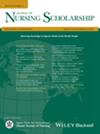Detection of Acute Deterioration in Care Home Residents: A Multicenter Qualitative Exploration of Barriers and Enablers
Abstract
Introduction
Delay in detecting acute deterioration in older adults in care homes is associated with avoidable hospitalizations and adverse outcomes, including premature death.
Objective
Underpinned by the Knowledge to Action Framework, this study aimed to understand the barriers and enablers to direct care staff detecting and responding to the early signs of acute deterioration in care home residents.
Study Design
Online focus groups or interviews with regulated (registered and enrolled nurses) and unregulated (assistants in nursing and personal care workers) direct care staff from participating care homes were conducted. Homes were recruited using disproportionate stratified random sampling to include metropolitan, inner regional, and outer regional care homes. Interview and focus group recordings were transcribed verbatim and analyzed using inductive thematic analysis.
Results
Eighty direct care staff (n = 48 regulated; n = 32 unregulated) from eight care homes participated. Fifteen focus groups (n = 7 unregulated staff, n = 8 regulated staff) and two interviews (n = 1 regulated staff, n = 1 unregulated staff) were conducted between July 2021 and October 2022. Four themes related to the barriers and enablers of detecting and responding to acute deterioration were generated: decision-making within the scope of practice; resource availability; streamlined communication; and teamwork.
Conclusion
Findings highlight the challenges direct care staff encounter in being able to detect early signs of acute deterioration and implement appropriate care pathways. Perceived barriers and enablers highlighted in this study need to be considered when developing and implementing programs to optimize the timely detection of, and response to, acute deterioration in care homes.
Clinical Relevance
Workforce knowledge, experience, and confidence deficits are significant barriers to detecting acute deterioration, while the unique workforce mix in care homes poses additional challenges for the accurate detection of early signs of acute deterioration. Knowing the resident, working as a team, and valuing the contribution of aged care staff and families in managing acute deterioration are enablers to achieving better outcomes for residents experiencing acute deterioration.




 求助内容:
求助内容: 应助结果提醒方式:
应助结果提醒方式:


